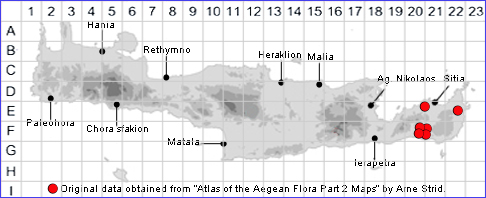THYMBRA CALOSTACHYA
Family and Genus:- See- LABIATAE
Common Names:- None
Homotypic Synonyms:- Micromeria calostachya.
Meaning:- Thymbra (L) An ancient Latin name used by the Roman naturalist and
philosopher Pliny for a savoury, thyme-like plant.
Calostachya (Gr) Beautiful spike.
General description:- Dwarf, somewhat aromatic shrub.
Stems:-
1) 20-50 cm tall, with axillary leaf-clusters, densely branched, erect or ascending.
Leaves:-
1) Sessile, c. 10 x 3 mm, oblong to oblanceolate, entire, obtuse, sparsely
puberulent and distinctly glandular-punctate above, densely grey-puberulent
beneath.
Flowers:-
1) Sessile, in few flowered verticillasters forming a long, slender spike.
2) Floral leaves, of the lowest verticillasters like the cauline, upper much smaller.
3) Calyx, 2-3 mm, gland-dotted and densely puberulent, with obscure veins;
a) teeth, narrow, 1/3 as long as the tube.
4) Corolla, 6-7 mm, white; tube slender, distinctly exceeding the calyx.
5) Stamens, exserted.
Key features:-
1) Leaves, tomentose.
2) Calyx, c. 3 mm, the throat glabrous inside.
3) Corolla, white, 5·5-6 mm.
Habitat:- Crevices and ledges of limestone cliffs, rocky slopes, screes. 0-100 m.
with Asperula tournefortii, Brassica cretica, Ebenus cretica, etc.
Distribution:- Cretan endemic, Rare, known only from a few locations in the east.
Flowering time:- May-June.
Photos by:- Steve Lenton
Status:-
Conservation status (for threatened species): Rare (R) according to the Red Data
Book of Rare and Threatened Plants of Greece (1995)
Rare (R) according to IUCN 1997.
Protection status (for threatened species): Greek Presidential Decree 67/1981.
SPECIES DESCRIPTION

